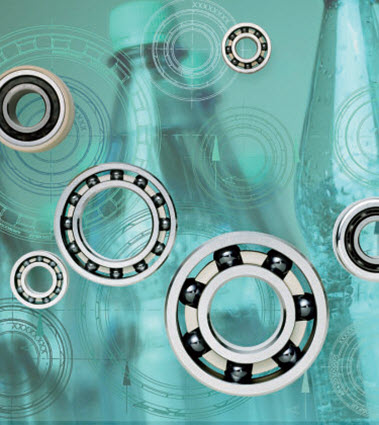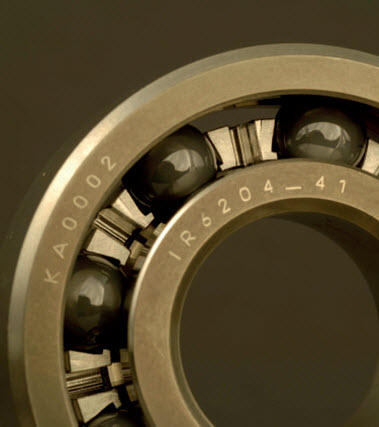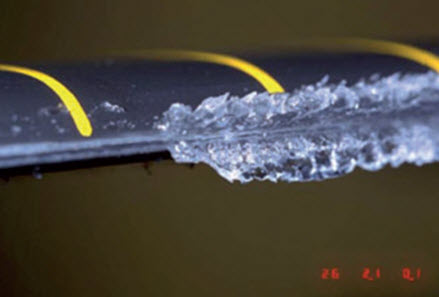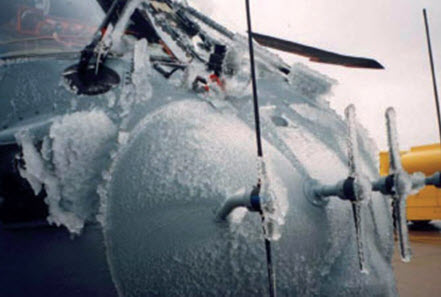Reduced friction and ice adhesion – optimization by means of plasma technology
According to estimates, losses equal to five percent of the gross national product occur in the industrialized countries due to friction and wear on the surfaces of machines, for example in roller bearings. These losses can be substantially reduced; there are large potentials for reduction via directed change in the physical-chemical properties of the material surfaces. By reducing friction and wear, energy which would otherwise be lost as heat can be saved. In this context, a very promising approach is to change the wetting behavior of surfaces with regard to media – such as lubricants or also atmospheric humidity, water and cleaning agents – by means of a plasma modification.
Additionally, the adhesion of ice to wings or external sensors on airplanes and helicopters is influenced by the wetting behavior of the surfaces. By means of plasma functionalization, ice formation can be delayed and the adhesion of ice to the surfaces can be prevented. Expensive de-icing of planes, consumption of large quantities of de-icer, but above all consumption of up to 30 percent aviation gasoline and thus substantial CO2 emissions could thus be avoided. Beyond this, anti-icing surface functionalization would make a considerable contribution to aviation and building safety.
 Fraunhofer Institute for Interfacial Engineering and Biotechnology IGB
Fraunhofer Institute for Interfacial Engineering and Biotechnology IGB


